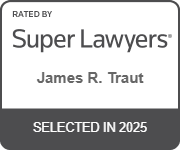According to the National Floor Safety Institute, over 8 million people frequent the emergency room each year due to fall-related injuries. And statistics released by the Bureau of Labor Statistics report that falls account for as many as 11% of men’s job-related injuries and 5% of women’s. Of the 8 million injuries seen in emergency rooms, as many as one million — or 12% — are related to “slip and fall” injuries. Those who are most at risk for slip and fall injuries are individuals 65 or older.
Just because someone slips and falls, though, that does not necessarily mean that someone else is to blame. There are often times when a slip and fall accident is just that — an accident. To prove that you are entitled to compensation for your slip and fall injury, you have to show that someone’s negligence was to blame.
Slip and fall injuries are guided by “premises liability” laws and are determined at the state level. Proving that your injury is due to someone else is not always as easy as it seems. Just because you fall on someone else’s property, that alone doesn’t always automatically make them liable or at fault. There are specific conditions that need to be met for you to win a personal injury case.
If you have been injured in a slip and fall you have to prove four essential things:
- The property owner or the employee of the establishment should have been aware that the conditions were hazardous because, under the same circumstances, any other “reasonable” person would have known and addressed the hazard
- The property owner or the employee of the establishment knew that there was a hazard but failed to address it or fix it
- The property owner or the employee directly caused the hazardous condition
- You were actually harmed by slipping and falling
The hardest part of proving your slip and fall injury is showing that the property owner or the employee actually knew that the hazard existed. If you are injured in a slip and fall, it is imperative that you ask for any documentation of scheduled maintenance to see if there is any note that danger was noticed and not addressed, to prove that they had prior knowledge.
The other critical component to proving your slip and fall injury is the legal construct of “reasonable person,” This legal term has nothing to do with the property owner or anyone they employ. It is a standard of care that means that any reasonable person in their position should have known that the hazard could lead to someone getting hurt. So reasonableness is merely a legal construct and can be highly subjective.
Many things determine “reasonableness”
- How long the defect has been there – If there is a record that the hazard was noticed and no one addressed it or repaired it, then that would likely make the property owner liable. If a property owner knows that a hazard exists, they have an obligation to repair or replace the danger so that no one gets hurt. Therefore, if you can prove that the property owner or an employee knew of the danger and did nothing, that would be grounds for liability.
- What type of care the property owner took with the property – The property owner is responsible for making routine checks to ensure that the grounds are safe, so they should have a daily routine. If not, then they might be liable for not maintaining the property reasonably.
- Was there something left on the floor that you tripped over? – If there was an object left on the floor that you tripped over, then the property owner had an obligation to remove it. Unless there was a reason for the object to be placed where it was, that would make the person who owns the property liable.
- Did you trip over something that once had usefulness but it no longer does? – If there was an object on the floor that at one time had a use like a drain pipe, but it is no longer in use, then you might be able to hold the property owner liable.
Slip and fall injuries are one of the hardest to prove in a personal injury lawsuit because they happen so frequently, and often they aren’t anything more than an accident. The key to proving your slip and fall injury case is to prove that reasonable care was not taken to ensure your safety by the property owner, which is required by premises laws.










